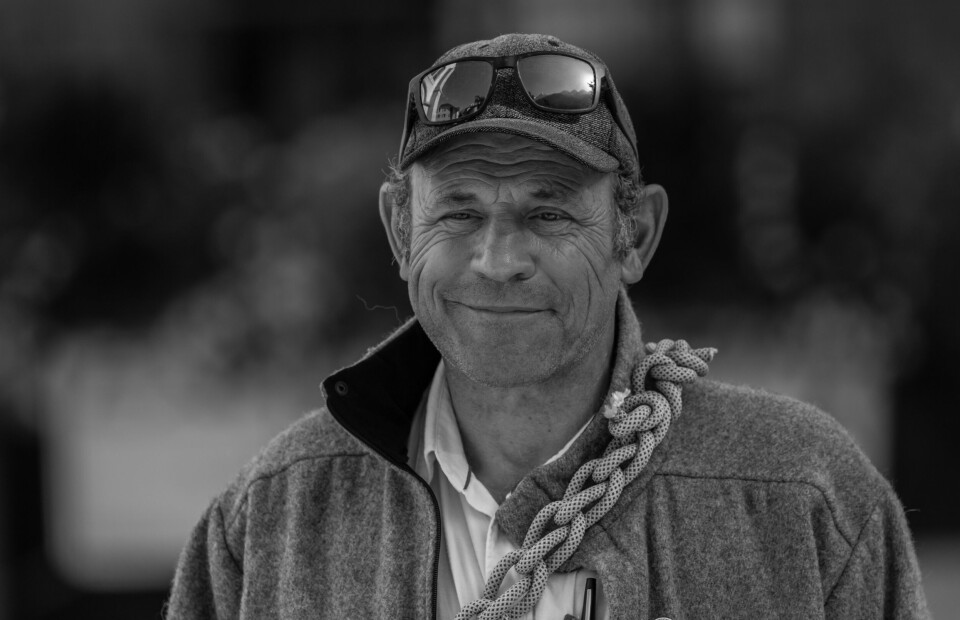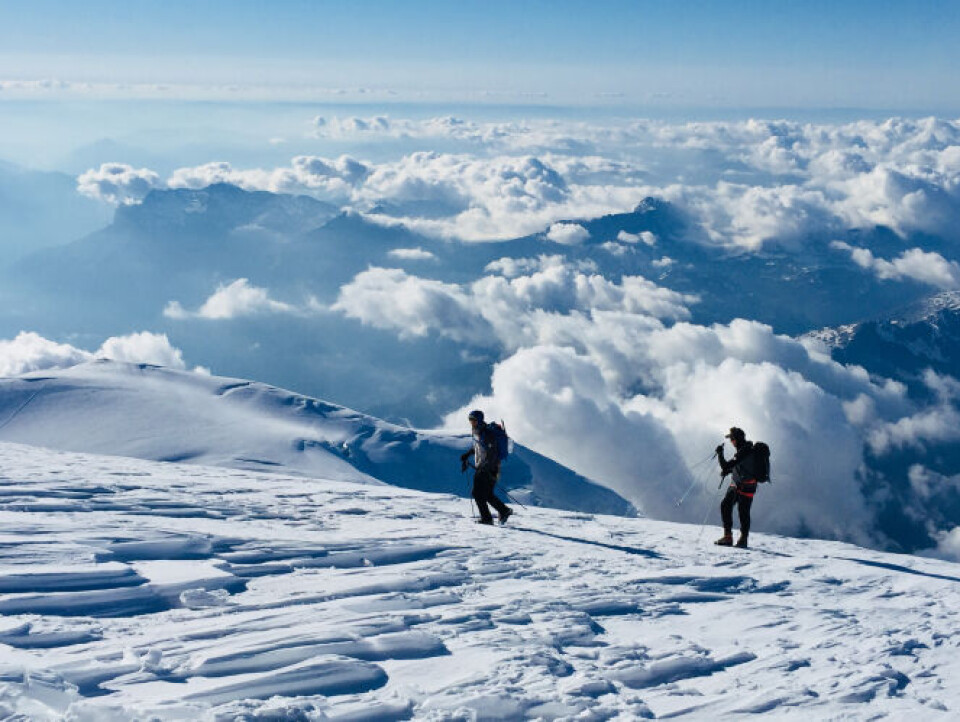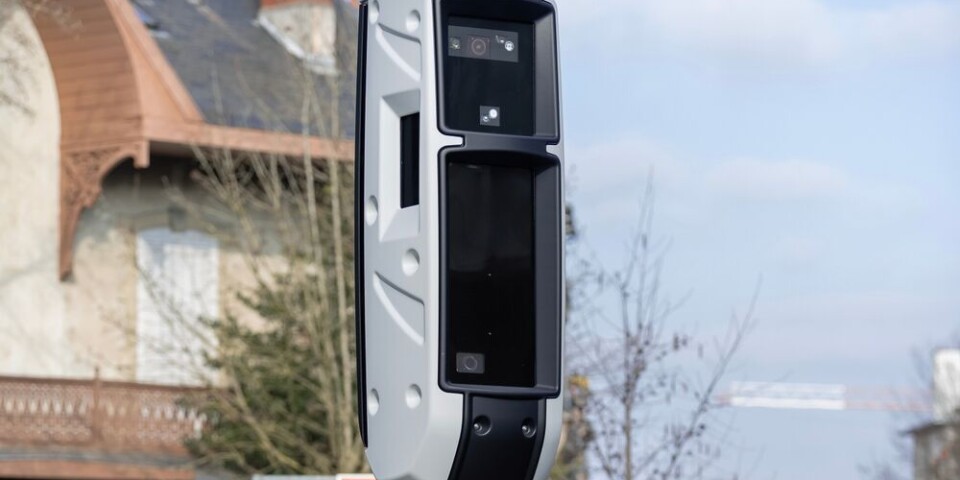-
Explore the Alpine village in France where winter is only just ending
The picturesque village of Bonneval-sur-Arc near the Italian border endures eight winter months out of twelve
-
'I helped restore French cathedrals as a female American stone cutter - despite prejudice'
Stella Cheng, who worked on the restoration of Notre-Dame Cathedral, faced sexism and racism
-
French woman named one of world’s best teachers
Céline Haller, inspired by English and US teaching methods, has gained recognition for revolutionising learning with hands-on projects and inclusivity
Mountain life: 200 years of guiding us at Chamonix in the Alps
Compagnie des Guides de Chamonix is the world’s oldest company of mountain guides. Its President, Olivier Greber, talks about their their mission to communicate their mountain passion to others

The first tourists at Chamonix were two Englishmen in 1741. They were William Windham and Richard Pococke who explored the glaciers, in particular the Mer de Glace. They wrote about their adventures in literary journals which were published throughout Europe, and this started a craze to find out more about Chamonix.
The first successful climb to the top of Mont Blanc was in 1786 by Jacques Balmat with physician Michel-Gabriel Paccard. The term alpinism was introduced later, but it was chosen because the Alps saw the beginning of mountaineering, and in particular Chamonix.
Were there mountain guides at that time?
There were mountain guides, but they had to fight to find their own clients. They would gather at the stations to be the first to approach visitors as they arrived on the trains, or at the hotel doors, and to be honest it was chaotic.
There was also a terrible accident in 1820 when three guides, Auguste Tairraz, Pierre Balmat and Pierre Carrier, lost their lives in an avalanche when a Doctor Hamel was determined to reach the summit of Mont Blanc, though he never did, and after the accident he never returned to Chamonix.
It was a huge shock to the town. There was no social security at that time and a solidarity fund was set up to help their families. The town council realised they had to do something and in 1821 they decided to organise the profession, and drew up the first rules based on two fundamental principles.
What difference did it make to have a company of guides?
The two main principles, which still exist today. One is solidarity, which means there is still a Relief Fund to support families of guides who are injured or killed during their work.The second is sharing out the work equally between guides. We have a system we call the Tour de Rôle. There is a list of all the guides, and those who do not work on the first day of the season will be the first to be offered work on the second day, and so on.
What is the work of a mountain guide?
Guides take people into the mountains on a wide range of different activities which can be walking on a glacier, rock climbing in different areas on lower slopes and harder climbing in the high mountains on snow and rock. They can work in mountain ranges across the planet, other than perhaps the USA where strict regulations make it more difficult to work there. That is because a glacier, for example, requires the same techniques wherever it is in the world.

How many guides are there in the Compagnie des Guides de Chamonix?
There are 160 mountain guides and 60 trekking guides. The mountain guides work in the higher mountains and the trekking guides take people on walks lower down. They will go round Mont Blanc, but do not have the right to go on the glaciers or to use mountaineering equipment such as crampons and ropes. It means we have a wide variety of activities on offer to suit all levels.
How much training do you have?
The training is very strict, around five years. It has developed since I did it in 1986 but it is still very demanding. Within the International Federation of Mountain Guides Association, France, Italy, Switzerland and England have the highest level of training.
The Compagnie des Guides de Chamonix used to provide the training, but for very many years now, it has been at national level.
How did you become a guide?
I was not born in the mountains. I come from Alsace, but I came to Chamonix when I did my national service with the army. I had already done some climbing and mountaineering, and I decided to stay on. I studied to be a Mountain Guide and I am still here. In our company there are guides who are carrying on a long family tradition.
David Ravanel is a sixth generation guide, and Jean-Paul Balmat is a direct descendant of Jacques Balmat who was the first to climb Mont Blanc in 1786.
What is it about the mountains that attracted you to work in them?
When you start climbing it is a passion and you want to discover the big open spaces and there is a challenge to climb and discover as much as possible. When you are a guide it is different, because the job is to share your experiences and knowledge with other people, and help them to progress. You no longer climb for your own satisfaction, but for others.
What is it that you share with others about the mountains?
Each client has a different approach. There are those who want to come for the sport and the challenges, others who want to discover the landscape. We have some who are interested in taking photos, and we also have scientists who are studying the mountains.
Each person has a different motivation and it is up to the guide to find the best way to satisfy the clients and their projects, taking into account the weather conditions on that day. We try to be in the right place at the right time. We can make two trips in the same place with different clients and we will not do it necessarily in the same way.

You can compare being a guide to being a chef. They do not want to make a dish hidden away in their kitchen, but prepare it for the pleasure of others, so they can appreciate and discover new tastes. So there is a parallel.
But it must be far more dangerous?
We have a great responsibility because our clients entrust their lives to us. When we are roped up with them, the link is very strong.
It is a profession where you can die?
Yes, you can face death, as was illustrated in that accident in 1820, fundamental to the beginnings of our Company. We do everything we can to make sure there are no accidents, but even so the mountain is a place where, even if you calculate the risks, sadly, there are always dangers we cannot avoid. There was a recent mountain rescue helicopter accident this September, when one man died and four others were wounded in the Isère.
These are difficult moments for us. We are very close to the mountain rescue services as there are guides in the rescue service who trained with us. They are people we know well.
Have you seen a big difference in the mountains since you started?
There is a huge difference. Since the beginning of my career the glaciers have got smaller and smaller. It makes our job more difficult because we have to adapt to changing conditions, but we must not forget that, even more importantly, the glaciers are an important reservoir of water. Some of the snow which falls in winter is transformed into ice which provides a store of water for the summer.
When there is no more water, you have to question what the consequences will be, not only for sport and the change in the landscape but also for the environment. Here we witness the first effects of climate change.
The first people who wanted to climb Mont Blanc were scientists to measure the air pressure, the temperature etc. And that continues today.
Have you also seen a change in the flora and fauna?
With less snow and higher temperatures, plants are growing higher up the mountains, where before there was just rock and snow.
There are animals and birds such as the Mountain Hare, and Rock Ptarmigan which depend on the cold and the snow. As their biotope diminishes they are more exposed to predators and have greater difficulty in reproducing, and they are suffering.
Can mountain guides do anything about it?
One of our last events connected with our 200th anniversary was to go to Paris by bicycle to speak to Parliament to present a group of scientific findings, showing the effects of climate change we have witnessed in the mountains.
Some of the findings were recorded by guides from within our company who are also scientists in ecology, like, for example, Brad Carlson and Daniel Rodrigues.
Was your message heard?
We were heard, but whether we were listened to is another matter. There is a big difference between the two. We are not the first to call attention to the effects of climate change, but the more of us who speak out, the more chance of getting our message across.
Where do your clients come from?
They come from all over the world, and Chamonix is still very popular with the British, so Covid has had a big impact on our business. This year we have seen mostly local European clients from France, Belgium and Switzerland and a big percentage of those discovered the mountains for the first time.
Do your clients have to be very fit?
Alpinism is not reserved for an elite. What you really need first is the desire to go into the mountains.
Some clients come to us as beginners. There are some I still work with now who started by trekking on the lower slopes and ended up coming with me on the most difficult climbs in the high mountains.
You do have to be very physically fit to go up the high mountains, but a good walker can discover climbing. You can start with something very easy and then progress to something more difficult.
It must be a different experience in the summer and winter.
Yes. Our busiest season is June, July and August and then January, February, March, April and May.
Winter is a good time to come though, as Chamonix is a world capital for skiing. It was first best known for walking and climbing. After the first ski slopes were introduced in 1932, skiing became more popular. We take people on the famous off-piste Vallée Blanche.
Outings can be a half day, a whole day or longer. We might go for two days and sleep in mountain huts. In winter we sometimes go for six days, taking our clients from one hut to another.
Do you have any particular special memories of your time as a guide?
Not really, because each time that I go out is an adventure, part of which is getting to know a client. There are some who I have guided for more than twenty years and who have become close friends.
Being in the mountains creates strong relationships where we share emotions and experiences.
It is a very rich life. We can also go and work in mountain ranges the whole world over. I myself have not travelled a great deal because I have my work here, though I would love to go to the Himalayas one day. But there is plenty of variety in the Alps. If you go out to the same place two days in a row it will always be a different experience, there is always something new. chamonix-guides.com
Related stories
France ski season 2021: Face masks to be mandatory
Mountain refuge in France seeks guardian - must like crowds
























